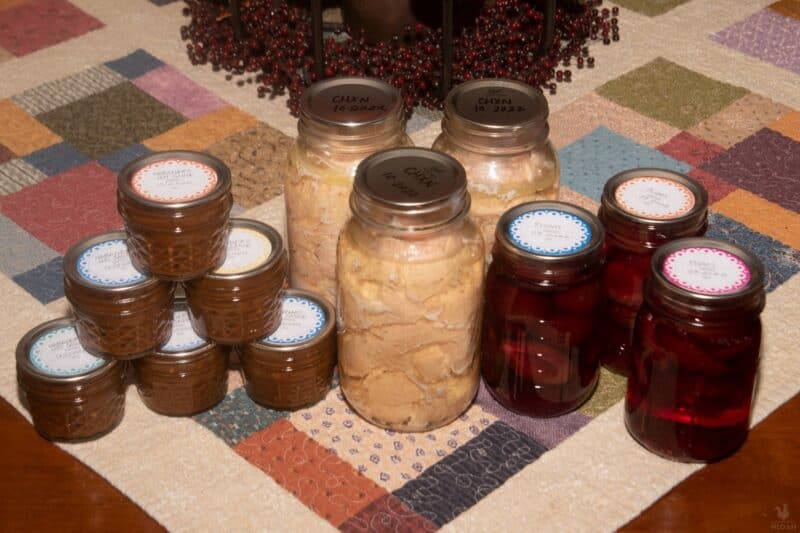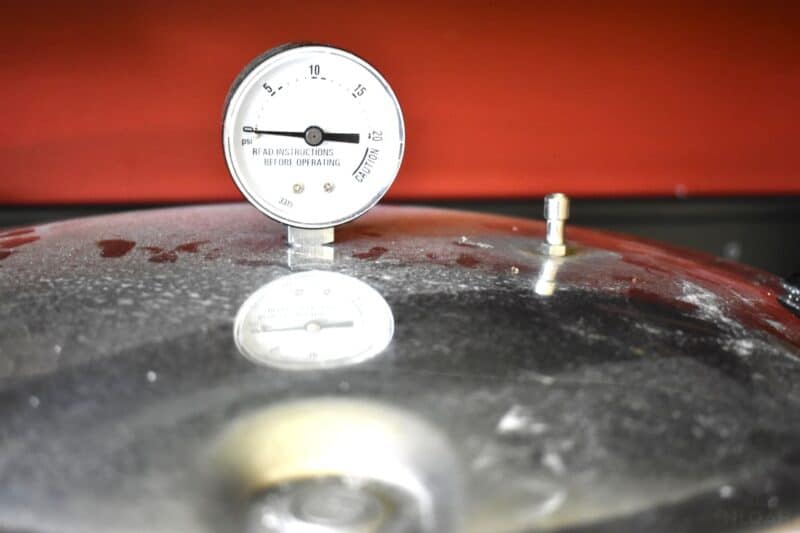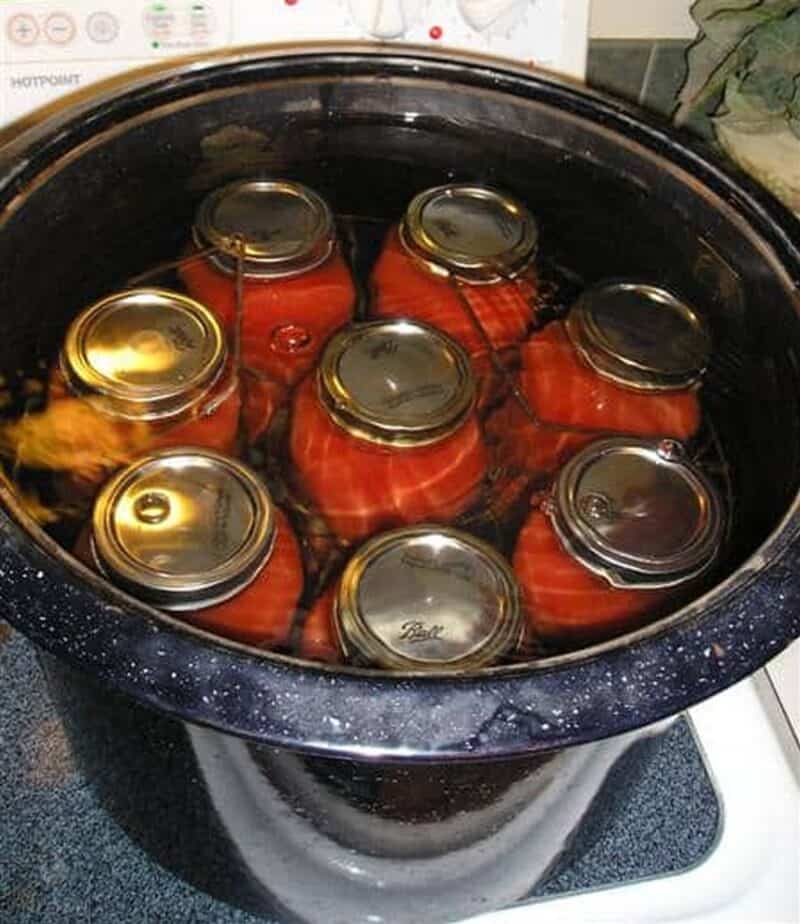Should You Pressure Can Everything Instead of Using a Water Bath?


One of the best skills that you can invest in is learning how to can. This is a time-honored technique that can help you preserve all kinds of foods, from fruits and veggies to meat and soups, at home yourself.
But as anyone who’s been engaged in the practice for a time will tell you, canning is more science than art: you must follow strict procedures when it comes to sterilization, preparation, packing, and processing if you want your food to last and, more importantly, stay safe.
When it comes to safety, there are two types of canning that people rely on for the most part: pressure canning and water bath canning.
Though similar, the outcomes can be very different and water bath canning has a reputation of being more failure-prone, and sometimes more dangerous, than pressure canning.
This has led some people to assert that you should simply pressure can everything for maximum simplicity and safety. But speaking frankly, that isn’t a good idea or a viable strategy. Each type of canning has a place in your arsenal, so keep reading and I’ll tell you why below.
Occasionally you’ll run across people who believe you should just pressure can everything for maximum safety. It’s easy to understand why they might think this, and that’s because pressure canning operates at much higher temperatures compared to water bath canning.
And as you already know, higher temperatures mean more dead germs and germs that are killed more reliably. Ergo, greater food safety and an increased chance of success, right?
Not exactly. While it’s true that pressure canning is effectively a much hotter process compared to water bath canning, and it applies high heat to the food over a longer period of time, safety when home canning isn’t just a matter of temperature, as we will learn in the next section.
Using pressure canning techniques for foods not specified for the process will at best result in lower-quality food that isn’t as palatable, even if it is still safe. At worst, it might turn the food subjected to it into a ruined mush or liquid!
Talk about a waste of time and resources! Sure, it might be safe but that won’t matter if nobody including you wants to eat it.
The bottom line when it comes to canning is this: people have pretty much figured out what must be done by now. We have recipes and independently verified, tested techniques that have been developed in laboratories at leading universities on the subject.
Think of these as the laws of canning. If you want to can something, you can refer to published guidelines to find exactly how to do it, and specifically what process you should use.
We know this because the risk factors for canning every different kind of food are well understood in our current year, and those risks basically do not change.

One of the basic laws of canning is that low-acid foods need to be pressure canned, not water bath canned.
The reasoning for this is simple: low-acid foods present a far more agreeable environment for all sorts of different microorganisms to grow, including the kind that will lead to spoilage and, most worryingly, the kind that can give you food poisoning and make you terribly sick.
Some common low-acid foods that are usually canned at home include:
These require the intense, sustained heat of the pressure canning process to absolutely eradicate any and all germs that might be present in them after the packing process is complete.
Trying to water bath can them will only allow these microorganisms to persist, and that will result in spoilage only if you’re lucky or food poisoning if you are not.
Conversely, high-acid foods do not require pressure canning and can be safely water-bath canned. This is because they are inherently not a suitable environment for certain kinds of bacteria that may result in terrible food poisoning.
Because of this, they do not need to be heated as hot as a pressure canner gets and they don’t need to be heated for as long to ensure complete safety.
Some high-acid foods include:
Now, you might be thinking that, because these foods are already an adverse environment for certain kinds of bacteria, that they could be canned satisfactorily and made even safer through pressure canning, right?
They could be made safer, yes, but most of these foods also will not survive the pressure canning process, suffering from a disgusting change in texture or just completely disintegrating under the intense heat and pressure they’ll be subjected to.
In this case, we want to avoid pressure canning them not for safety but for quality’s sake.
So, all this talk about food poisoning is pretty scary. How bad are we talking about? Upset stomach, maybe some diarrhea, maybe some vomiting?
Not hardly. How about paralysis and then death? That is exactly what is on the line. What’s the perpetrator? A bacterium, Clostridium botulinum, is sometimes erroneously referred to as botulism. But botulism is the illness that the bacteria causes via a toxin that it secretes.
This stuff is downright hellacious, and causes weakness, blurry vision, inability to speak, pronounced weakness or paralysis, vomiting, and eventually death by respiratory collapse; it can actually paralyze the muscles responsible for breathing!
As you might have guessed already, the bacteria can thrive in food that has been improperly canned, but it produces the toxin when it is in a low oxygen environment of a certain temperature. Worse, it might not give any signs of traditional spoilage!
Your canned food might have every appearance of safety and wholesomeness, but if you use the wrong process, make a mistake, or don’t follow instructions those couple of bites you take might cost you your life…
Instances of botulism often result from trying to water bath can low-acid foods as detailed above. So, do you still want to improvise when canning food at home? I hope not.
After taking all of this in, the prime lesson is this: you should never, ever attempt to experiment with canning procedures!
You should always follow the directions given to you in a reliable, trusted canning manual or the ones published by the NCHFP, various university extensions, or community services.
Trying a new recipe is one thing, but you aren’t going to be the one to crack the code on a new and innovative method of canning that will allow you to safely can different kinds of food using an unexpected method or with greater efficiency.
Learn the principles of safe canning and then follow instructions unless you want to court disaster. No exceptions!

Now that all the doom and gloom is out of the way, I should have mentioned that there are some foods that may be safely canned using either method- pressure or water bath- as long as you follow the prescribed procedure for either.
To be perfectly clear, you can’t use the recipe for water bath canning tomatoes with a pressure canner, and vice versa.
Nonetheless, it is possible to safely can the following foods using pressure or water bath canning with a reasonable expectation of quality once you open them back up:
It is a pretty limited list, and though there might be one or two more things out there these are the main ones. Remember, don’t improvise!
Tom has lived and worked on farms and homesteads from the Carolinas to Kentucky and beyond. He is passionate about helping people prepare for tough times by embracing lifestyles of self-sufficiency.
